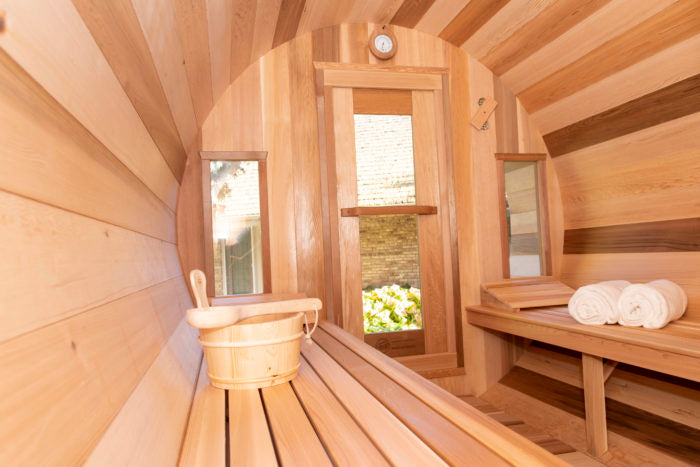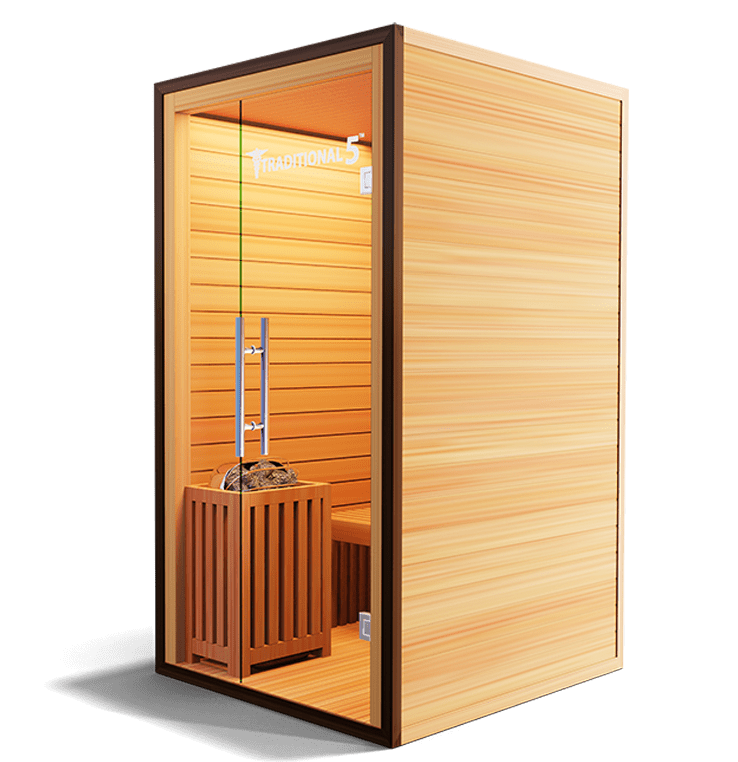The smart Trick of Traditional Sauna That Nobody is Talking About
Traditional Sauna for Beginners
Table of ContentsSome Ideas on Traditional Sauna You Need To KnowWhat Does Traditional Sauna Do?The smart Trick of Traditional Sauna That Nobody is Talking AboutThe Basic Principles Of Traditional Sauna
The majority of the weight shed in a sauna is water loss and is re-gained upon rehydrating. However, without a question sauna can be a crucial part of a healthy and balanced weight management program. To check out the differences between traditional and IR saunas, I will separate these into proven, theoretical, and fabricated distinctions.Therefore, the hottest point in the saunawhich is at the ceiling straight over the sauna heateris usually in between 185 and 190 F. Traditional Sauna. Claims that a conventional sauna exceeds 200 F is just not true and not suitable for electrical saunas sold in the US. The temperature for a far-infrared sauna is typically set between 120 and 140 F; nevertheless, unlike the standard sauna, the goal in and IR space is not to achieve a high temperature
As a result of this, the temperature level distinction is virtually pointless, because excessive sweating leads to both sauna types, but the technique of heating the body is different. In an IR sauna the bather will certainly really feel hot and will sweat a lot, yet at much lower temperature levels. Thus, if the objective is to spend longer amount of times in the sauna, the IR sauna is an excellent selection.

Some Known Incorrect Statements About Traditional Sauna
When the heat is attained, the aspects cycle on and off to keep the high temperature. Most traditional sauna individuals take pleasure in pouring water over the rocks to create heavy steam to increase sauna humidity levels. The advantages of pouring water over the rocks consist of: making the room more comfy, dampening the nasal passages, and allowing the usage of aromatherapy by blending essential oils with the water.
In a far-infrared sauna, the warm front penetrate the body to efficiently heat the body and raise the body core temperature level. To accomplish this raised temperature, Far-infrared emitters develop infrared energy which is close to the same wavelength as that which the body normally emitsoften described as the "Important Variety" of 7 to 14 microns), so the power is well obtained by the body.
When the energy gets in the body, it causes the body temperature to raise and eventually results in perspiration. In an infrared sauna it is essential for the emitters/heaters to remain on nearly constantly. Because there is no mass of rocks to keep warm, the sauna will certainly cool if the emitters shut down.
As pointed out above, the sauna bather in an infrared area wishes to position himself in front of running emitters to get optimal gain from the warmth. The heating time for the 2 spaces can be very different, relying on exactly how the spaces are utilized. For a conventional sauna, a bather needs to enable 30-40 minutes for the room to achieve a wanted temperature level and to appropriately pre-heat the rocks.
Our Traditional Sauna Statements
A well constructed sauna will typically attain a temperature level of 150-160 F in regarding 30-40 mins (Traditional Go Here Sauna). For hotter temperature levels, the area may need to heat for a longer duration. As soon as the space attains established check over here temperature level, the heating system will certainly cycle on and off, generally operating about 50% of the moment. The protected walls and the heated rocks will certainly keep the area warm and at stable temperature levels.
To some, 15 mins was "lost" while the infrared energy heated up the timber panels instead of warming a body, while others find a pre-heated room to be more comfy and think a raised starting temperature level is necessary to start perspiring. The length of suggested use for each room is about the same (10-15 minutes per session); however, because of the lower air temperatures and the capability to feel the impacts of infrared warm faster than a standard sauna, it is not unusual for an individual to spend a total of 20-30 minutes in an infrared sauna.
Typical saunas often tend to be larger (thus use you could look here even more electrical energy) than infrared saunas, although standard saunas are certainly available in one and 2 individual sizes as well. For a two-person typical sauna, 5x6 or 5x7 size is most prominent. The top bench can conveniently seat two or three individuals and is also enough time to relax throughout the sauna session.


The average cost per kWH of electrical energy in the united state is around $0.11, so a 4.5 kW heating unit will certainly cost around $.50 to run for one hour, if the heating unit runs constantly for one hour. Typically a sauna heating unit will run for 75% of the very first hour and 50% of succeeding hours on because the components cycle once the set temperature level is accomplished.
Traditional Sauna Can Be Fun For Anyone
A 2 individual far-infrared area is generally physically smaller than a traditional sauna, usually concerning 4' x 4' or smaller sized. The IR heating unit is generally 1.5-1.7 kW utilizing a 120 volt 15 amp plug-in service. Because the space can be used sooner than a sauna area, we will certainly presume the space is made use of for to of an hour including heat up time.
There is a hardly ever talked about difference in the social experience between the 2 rooms. While our culture has actually shed some of the social advantage of the traditional sauna experience, it can be extremely socially rewarding. From family members time in the sauna, to heart-felt discussions with considerable others, to sauna partiesthe typical sauna experience can cause intimate socializing.
The majority of greater end infrared spaces consist of tinted light treatment, audio systems and full-glass fronts.